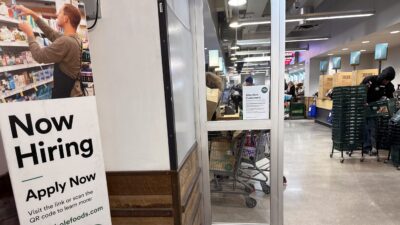Amazon Job Cuts Broaden Big Tech’s Layoff Barrage
When layoffs rise, people spend less, which leads to tighter bottom lines and more layoffs. Wash, rinse, and repeat.

Sign up for smart news, insights, and analysis on the biggest financial stories of the day.
Amazon workers woke up to a “Good morning” text on Tuesday telling them they’d been laid off, Business Insider reported. More than 14,000 Amazonians got the axe as layoffs at Big Tech companies continued to climb. Microsoft has cut 15,000 folks so far this year, and Intel said in April that it plans to part with 21,000 employees (20% of its workforce). HP, Blue Origin and Salesforce are said to be eliminating thousands of jobs as the tech sector embraces AI and automation.
Beyond tech, UPS has cut 48,000 roles this year. Paramount Skydance said Wednesday that 2,000 positions, or 10% of its workforce, will be cut. Target’s cutting 1,800 corporate jobs, or 8% of its workforce, in its first major layoffs in a decade, while the federal government has eliminated 100,000 roles so far this year.
Blurry Big Picture
Making sense of the onslaught of layoffs and predicting whether it’ll continue or ease up is complicated. Because of the government’s continued shutdown, the September jobs report is more than a month past due, and it’s unclear whether October will even get a count. However, non-government indicators suggest volatility in the job sector may continue:
- Payroll processor ADP reported Tuesday that private-sector job gains ticked up in the four weeks to October 11, which could signal the start of a recovery. At the same time, ADP called the improvement tepid and warned that future reports might show a pullback. ADP will release a larger report next Wednesday that could shed more light on the situation.
- Citi similarly estimated a modest uptick in unemployment for the week that ended October 18, while the Federal Reserve Bank of Chicago found unemployment stayed roughly the same from September to October.
Vicious Cycle: When layoffs rise, people spend less, which leads to tighter bottom lines and more layoffs. Wash, rinse and repeat. Wealthy shoppers are thought to have made up spending shortfalls so far, but they could skip their next Sephora haul if the government shutdown, which is already the second-longest in US history, continues to weigh down the economy. The cycle could also speed up if SNAP and other assistance benefits lapse, leaving consumers with less spending money. On the other hand, the Fed cut interest rates to a three-year low yesterday (despite inflation not yet dropping to the level officials are aiming for), which could slow the job market’s churn.











